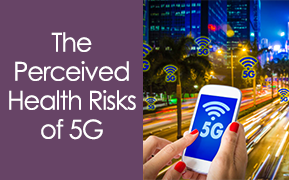The Perceived Health Risks of 5G

5G is a technology which is being rolled out and is still very much in its infancy, but there is already an abundance of ‘opinion’ pieces distributed within the printed and social media environs which attempt to suggest the health risks associated with 5G. In this article we will discuss what these perceived risks are.
These health concerns aren’t new. They haven’t developed with the onset of this new technology. The concerns regarding radiation are long founded and aren’t just limited to mobile networks, as is commonly thought. The use of Wi-Fi and even smart meters has brought concerns regarding radiation.
The concerns stem ostensibly around radiofrequency radiation. Radiofrequency radiation doesn’t just apply to ‘radio’ frequencies as the name might suggest. It applies to everything that is transmitted through the electromagnetic spectrum. This includes ultraviolet light, microwaves and even x-rays. There are many more examples, and x-ray radiation aside, none of them are inherently dangerous in the standardly perceived idea of radiation. To consider how dangerous radiation is, it must be placed into categories known as non-ionizing radiation and ionizing radiation. Non-ionizing radiation is radiation which is far too weak to break chemical bonds. Visible light and ultraviolet light for instance are placed into this category. To rather quickly scupper the Wi-Fi concerns raised earlier, this uses radiation in the non-ionizing class. From a scientific viewport this is therefore inert and not dangerous in any currently understood way.
Ionizing radiation, on the other hand, is the one which packs the invisible punch. It carries sufficient energy to break bonds and detach electrons from atoms. These are very different types of radiation from those which we harness in our technological world. Therefore, it can almost be argued that the term radiation is unfairly branded as dangerous in all circumstances, and this is an important idea to understand when considering if 5G actually poses a health risk.
For the rollout to be completed, thousands of new masts will need to be built in order to support the network and therein lies the crux of the ‘against’ argument. There is immense concern that on this basis we will constantly be bombarded with ‘dangerous’ levels of radiation. However, scientifically speaking this just is not the case. It does not matter how many of these masts are erected, that fact is irrelevant. On a daily basis we are bombarded with light from the sun, a form of electromagnetic radiation which is far more powerful than the radiation used for 5G, and despite this fact it is not in any way, shape or form dangerous.
To summarise, the science to allay the concerns is comprehensive and clear. There is no evidence present that is backed up and accepted to acknowledge there is any risk at all, let alone a minimal one.


